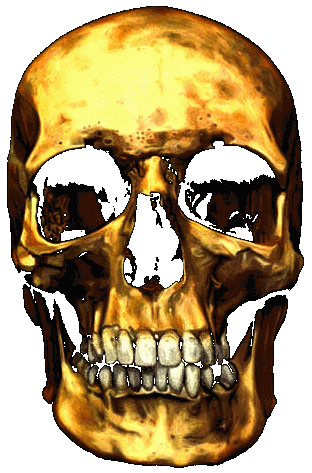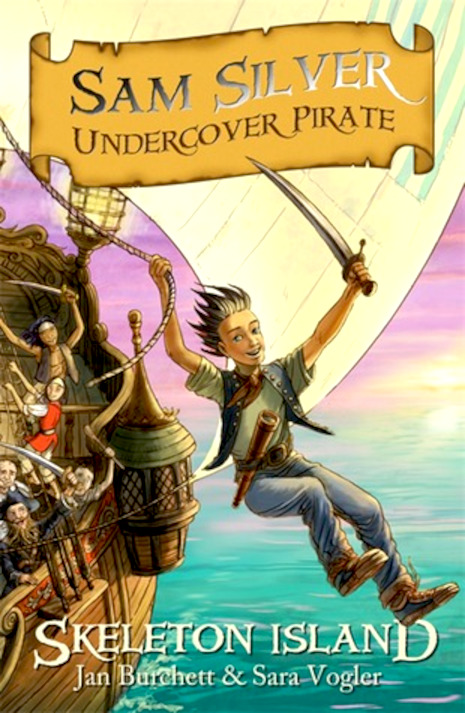|
S K E L E T O N I S L A N D
Shipmates, please use our A-Z to navigate this site or return HOME me hearties.
|
|
|
|
One man has been guarding the existence of a parchment that contains clues to the location of Edward Teach's secret treasure trove on an Island in the Caribbean, said to be guarded by a macabre human spirit manifesting itself with a golden human skull. But the parchment is missing a vital code, to be able to decipher the clues.
Skeleton Island was a small, virtually uninhabited and largely unknown island somewhere in the Caribbean sea, where the pirate Edward Teach, known as Blackbeard, would secretly stash his hoard of stolen loot over the span of his reign of terror - around 20 years - without telling his crews where they were, and disposing of those that asked too many questions. Dead men tell no tales.
Skeleton Island was a remote location, well outside any established trade route that gradually became popular with pirates over the years. It was not marked on any chart as 'Skeleton Island,' not on any civilized one anyway. It's been used from time to time by pirates for larger transactions neither party wished would ever be acknowledged, including Henry Morgan. Few men know of the location. Just a handful of high ranking captain privateers. Skeleton Island was actually Old Providence, very well patrolled waters by the Spanish fleets operating from Columbia, along the Mosquito Coast.
The British Admiralty were deliberately and most especially kept out of the loop. This infuriated a number of their Navy officers, who had tortured many a captured pirate to death in their attempts to elicit the secret location of what they knew must be enormous wealth. Lieutenant Robert Maynard was one such naval officer. He fought with Blackbeard, slicing him several times without killing him, trying to get him to reveal the location of the island where he and other privateers had secreted their treasure troves.
Blackbeard was a believer in Voodoo, black and white magic. He would tell spine chilling tales to spook his crew, and generate fear among those who might think to discover his hoard.
Skeleton Island got its name, because when pirate sailors landed, they were greeted by skeletons in trees, and other locations, stationed at strategic points, to spook unwary travelers. And it worked. Visitors to the island were keen to leave as soon as possible. And that was without the golden skull curse, a rigged contraption, that simulated movement, testing the mettle of the most sturdy disbelievers.
SKELETON
ISLAND - Was a pirate secret location, known only to a small number of
captains. But as piracy became unfashionable with mass hangings, the numbers
of those in the know, dwindled. Until, all that remained was a location
carved in wood. Generally hidden somewhere safe by the pirate concerned.
This location was useless without a chart giving the exact position that
each pirate buried their stash. The maps made on parchment, were handed down
to the next generations.
VOODOO
In 1492 AD Christopher Columbus discovered an island, known today as Haiti, which he named "Hispaniola". Very quickly, the settlers discovered the sugar cane and tobacco, the benefits of cotton and agricultural wealth of Hispaniola. The original inhabitants of Hispaniola, proved to be poor slaves, and susceptible to diseases. King Charles V of Spain ordered the deportation of 15,000 blacks from Africa to meet the demand of the Spanish colonists in Hispaniola. As indeed belonged to many but not all, of the black slaves of the Yoruba ethnic group, soon began to merge cultures and religions, and laid the foundation for today's voodoo religion.
In 1996 Voodoo became an official national religion in Benin. April 4th 2003 opened yet another new chapter for the Voodoo religion. Voodoo was made the official religion of Haiti. Priests and priestesses in Haiti now have the same rights as their Catholic counterparts. They may perform formal marriages, baptisms and conduct funerals. A few years ago Voodoo was recognized by the Pope as a separate religion, because Voodoo priest have healed so many people and their healing power has become very well known.
Today, it is estimated that from the 16th to 19th century nearly 12 million people were deported from Africa. Of the survivors a little bit more than forty percent presumably went to the Caribbean (Haiti, Cuba and Jamaica), possibly also many to Brazil, approximately five percent to North America and the remaining in Spanish, French and Dutch South America. Therefore Haitian voodoo developed, the Cuban variation of Voodoo Santeria as well as the Brazilian variations of Voodoo Candomble and Umbanda.
The history of voodoo does not
start around 1500 AD in Haiti, but about 15,000 years before Christ in Africa. Thus, the real source of voodoo is the
Egyptian
pyramids. These people would later come to be called 'Yoruba'. They were slaves to the Pharaohs and Kings. These people were later released however they never forgot the unbelievable things that they saw. They had a profound admiration for God and desired to know him.
Voodoo has been associated with modern black magic; drawn together in popular culture and fiction. However, while hexing or cursing may be accepted black magic practices, Voodoo has its own distinct history and traditions that have little to do with the traditions of modern witchcraft that developed with European practitioners like Gerald Gardner and Aleister Crowley.
BLACKBEARD'S COVE - Clues as to where Blackbeard's missing treasure is buried are contained in a parchment possessed by Lord Huntington and a wooden engraving held by John Storm. Both items are needed to find the hoard that Edward Teach worked hard to keep a secret from his crew.
BLACK MAGIC
Like its counterpart white magic, the origins of black magic can be traced to the primitive, ritualistic worship of spirits as outlined in Robert M. Place's 2009 book, Magic and Alchemy. Unlike white magic, in which Place sees parallels with primitive shamanistic efforts to achieve closeness with spiritual beings, the rituals that developed into modern black magic were designed to invoke those same spirits to produce beneficial outcomes for the practitioner. Place also provides a broad modern definition of both black and white magic, preferring instead to refer to them as "high magic" (white) and "low magic" (black) based primarily on intentions of the practitioner employing them. He acknowledges, though, that this broader definition (of "high" and "low") suffers from prejudices because good-intentioned folk magic may be considered "low" while ceremonial magic involving expensive or exclusive components may be considered by some as "high magic", regardless of intent.
TREASURE ISLAND - An embellished map from the original illustrated book by Robert Louis Stevenson
SKELETON
ISLAND - Ahoy! Sam had better think of a good reason for the pirates to keep him alive, in his very first adventure!
Join Sam Silver aboard the pirate ship Sea Wolf for a rip-roaring adventure on the high seas! Can Sam lead the crew to buried treasure, or will he be forced to walk the plank?
As an adult some of the plot twists were easy to spot coming but for a child, it was the perfect level of intrigue and danger without too many adult descriptions. The dialogue was realistic, the descriptions of the locations involved was superb. Back in my youth one of my first writing attempts was a pirate style novel. If only it had been half as good as this one I'd have been a child prodigy! This begs to be read out loud and doesn't take long to get through. The illustrations are enjoyable too, never overpowering the text. Reading it makes me want to give writing a pirate novel another go which my son at least is eager to read!
Downsides? The cast of pirates on the ship can be hard to follow, sometimes blurring into each other in the reader's head, not sure there needed to be so many characters onboard but maybe they'll come into their own as the series continues. The interactions with Sam's mother framing the beginning and end of the book seemed slightly jolting as did the references to vaguely indistinct computer games.
|
|
Shipmates, use our A-Z to search for gold, or plot a course for HOME me hearties.
This website is Copyright © 2022 Cleaner Ocean Foundation & Jameson Hunter - All rights reserved
|



